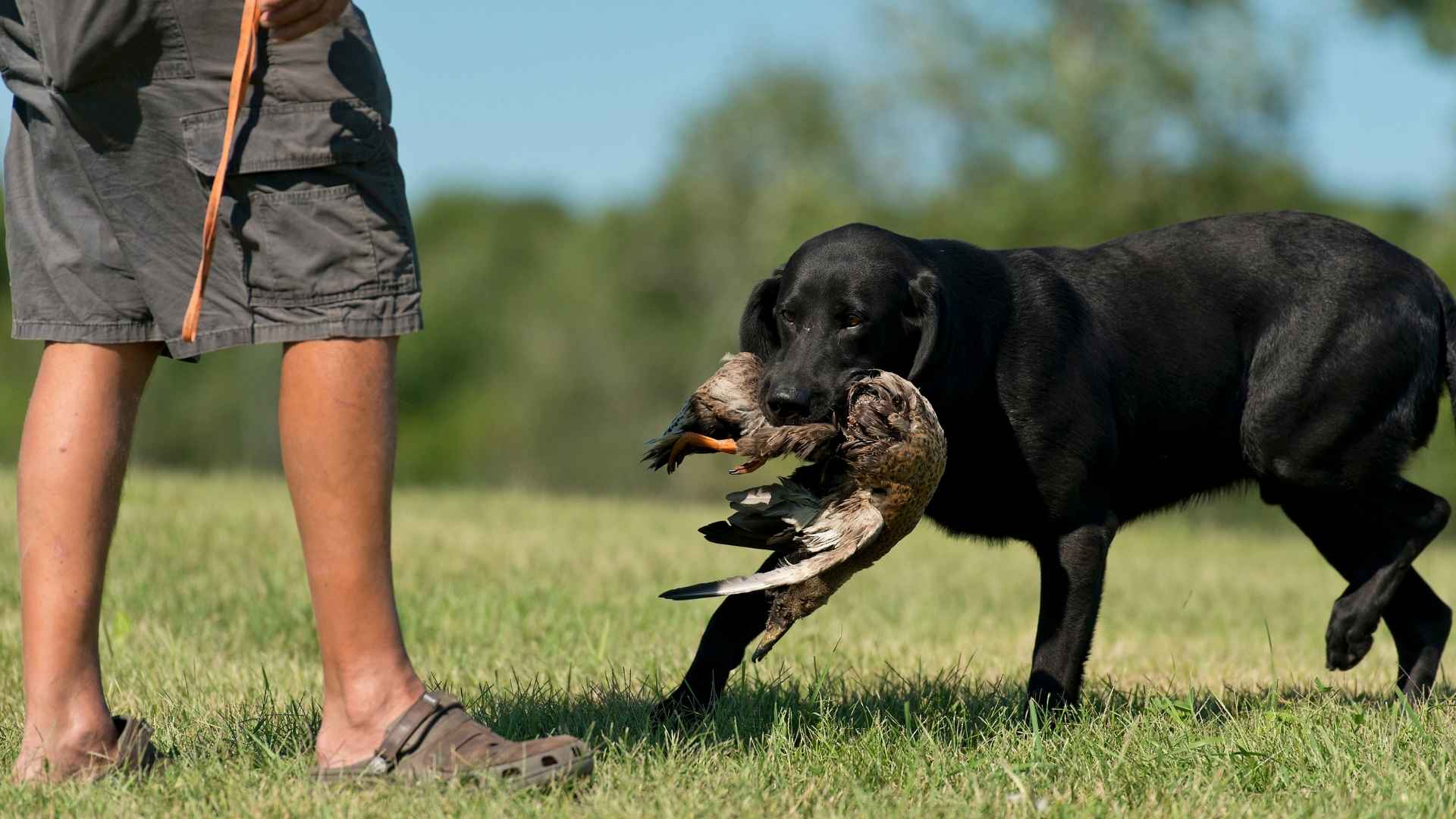If your ideal dog is as adventurous as you are and loves a challenge, highly trainable hunting dog breeds might be your dream companions. These active dogs were born to work—tracking, hunting abilities, retrieving, flushing, or pointing—with natural instincts that go back centuries.
But it’s not just their natural hunting skills that stand out; it’s how easily they pick up training. Whether you’re chasing game or just training for agility, these determined hunters are wired to learn fast and follow through.
Highly trainable hunting dog breeds are intelligent, obedient, and always eager to please. They love having a job to do and will go the extra mile (literally) to make their humans proud. Their energy is contagious, and their loyalty unmatched.
Even if you’re not a hunter, these breeds excel in homes with active lifestyles. Give them structure, praise, and play, and they’ll give you 100% every time. With the right training, these dogs become more than pets—they become reliable partners, both in the field and at home.
Highly Trainable Hunting Dog Breeds
1. Labrador Retriever
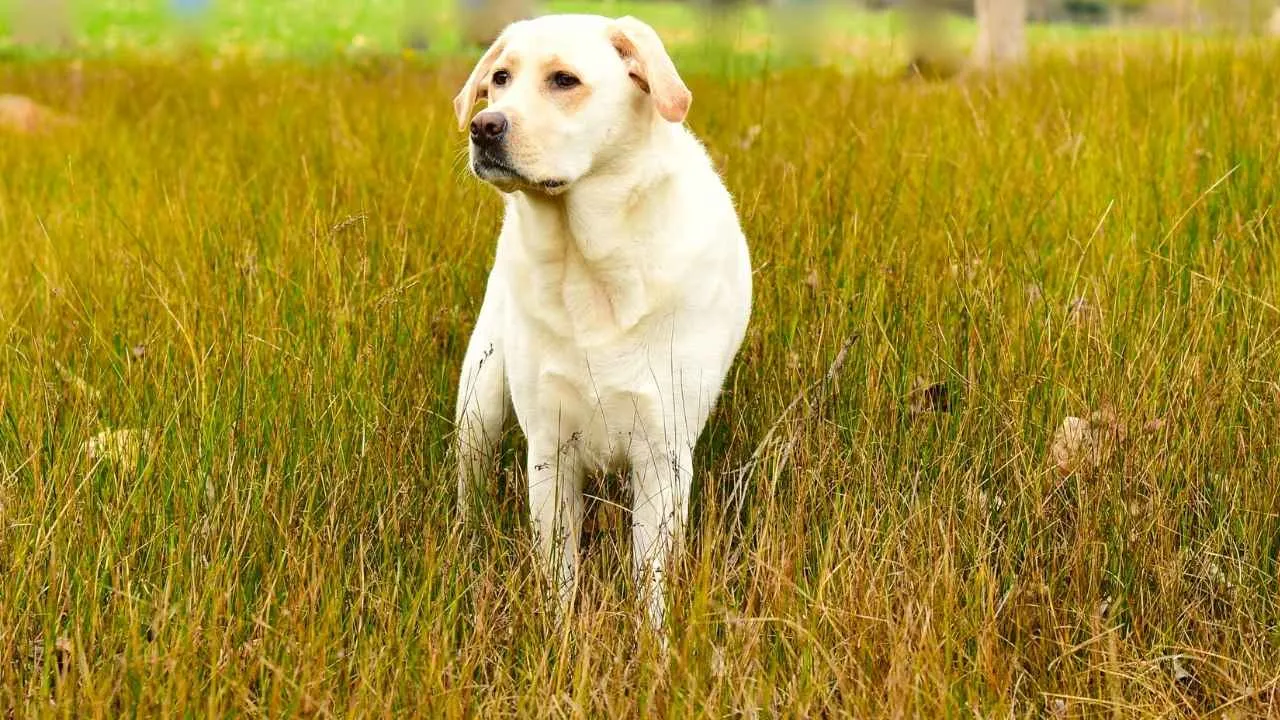
First up, we have a sporting breed, the Labrador Retriever. They are not just America’s popular breed—they’re also a hunting powerhouse. Known as gun dogs, they were originally bred to retrieve game for hunters, making them versatile hunting companions for hunting environments.
Their high energy makes them always ready for play, while their adaptable and protective nature allows them to excel in roles like service dogs, guide dogs, rescue dogs, or therapy dogs. Today, Labradors make excellent companions for families who enjoy outdoor activities like swimming, hiking, or hunting. Their active nature and love for adventure make them perfect for an active lifestyle.
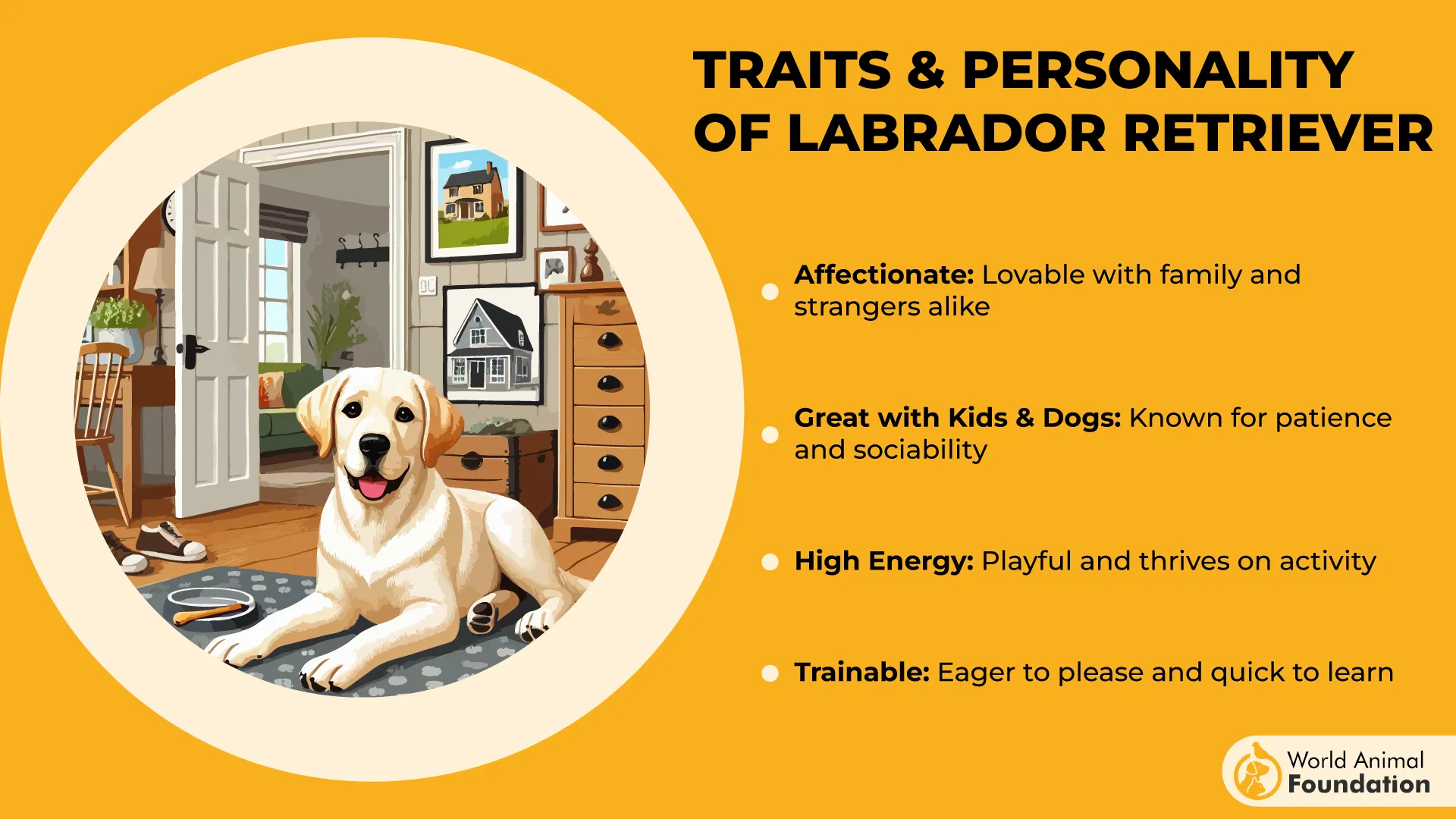
They’re eager to please, quick learners, and thrive with training (especially if treats are involved—Labs will do calculus for a cookie). Typically, they need about an hour of exercise each day to keep them mentally and physically stimulated. Without adequate activity, they can become restless or develop behavioral issues.
Though Labradors are generally friendly and get along with almost everyone, their high energy and wagging tails can sometimes pose a risk to toddlers and young children, as they might get accidentally knocked over, says PetMD.
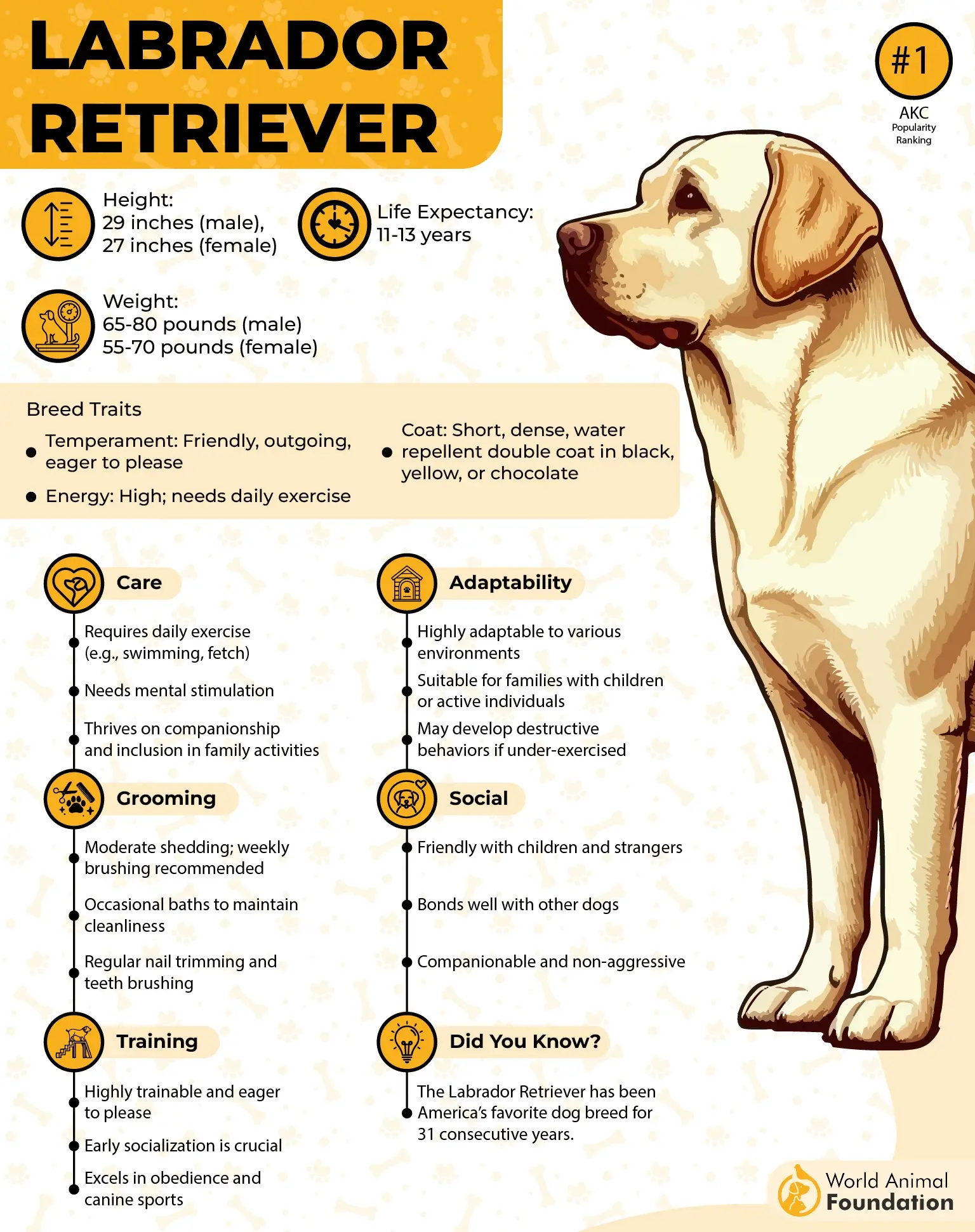
Whether it’s flushing game, retrieving ducks, or just mastering complex commands, Labs excel at it all. And when they’re off duty? They’re goofy, lovable family dogs who think every human is their best friend.
Top Features
✔️ Highly trainable and eager to learn
✔️ Excellent retrievers, especially in water
✔️ Social butterflies—get along with humans, kids, and other dogs
✔️ Energetic but gentle, with a never-ending tail wag
Fun Fact: Labs are often described as “puppies for life”—they keep that joyful, goofy personality well into adulthood. Hide your socks.
2. English Springer Spaniel
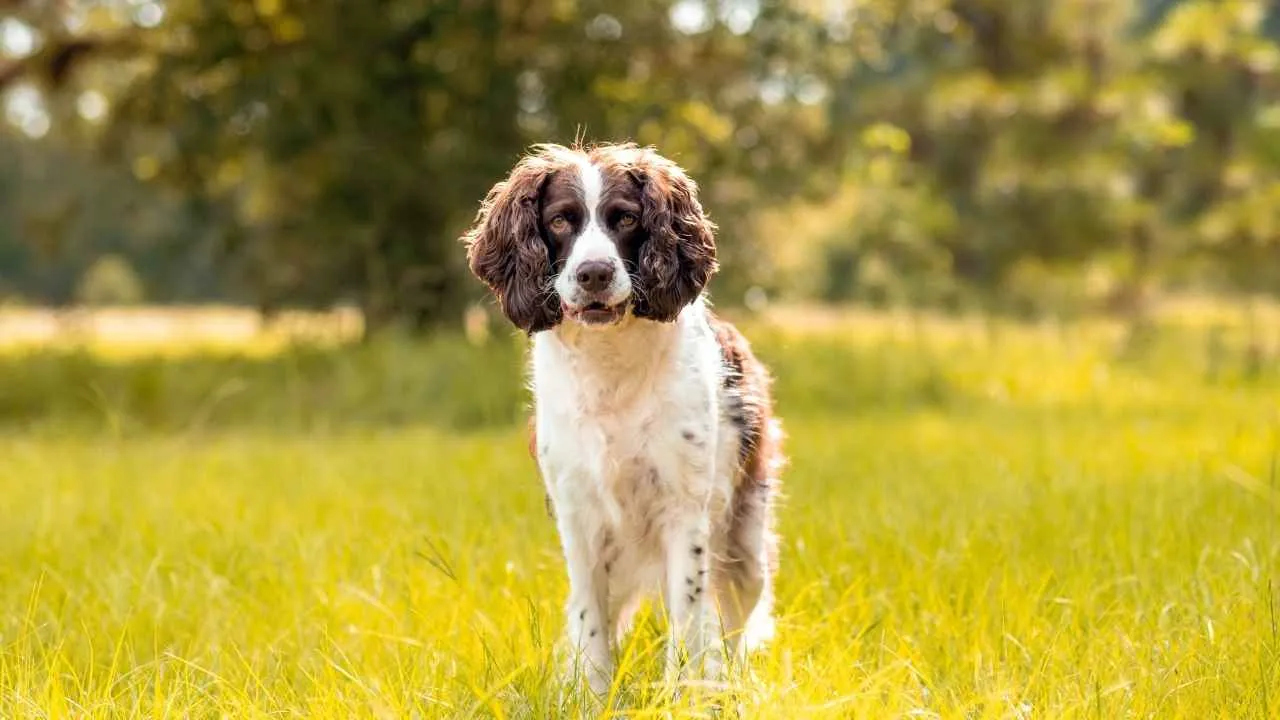
Elegant in name but a total workhorse in the field, the English Springer Spaniel is your go-to breed if you need a hunting partner with both brains and bounce. Originally bred to “spring” game from thick cover, these dogs are excellent at bird hunting and retrieving them with soft mouths.
Known for their wavy outer coat and floppy ears, they typically stand around 20 inches tall and weigh between 40–55 pounds, though their size and appearance can vary.
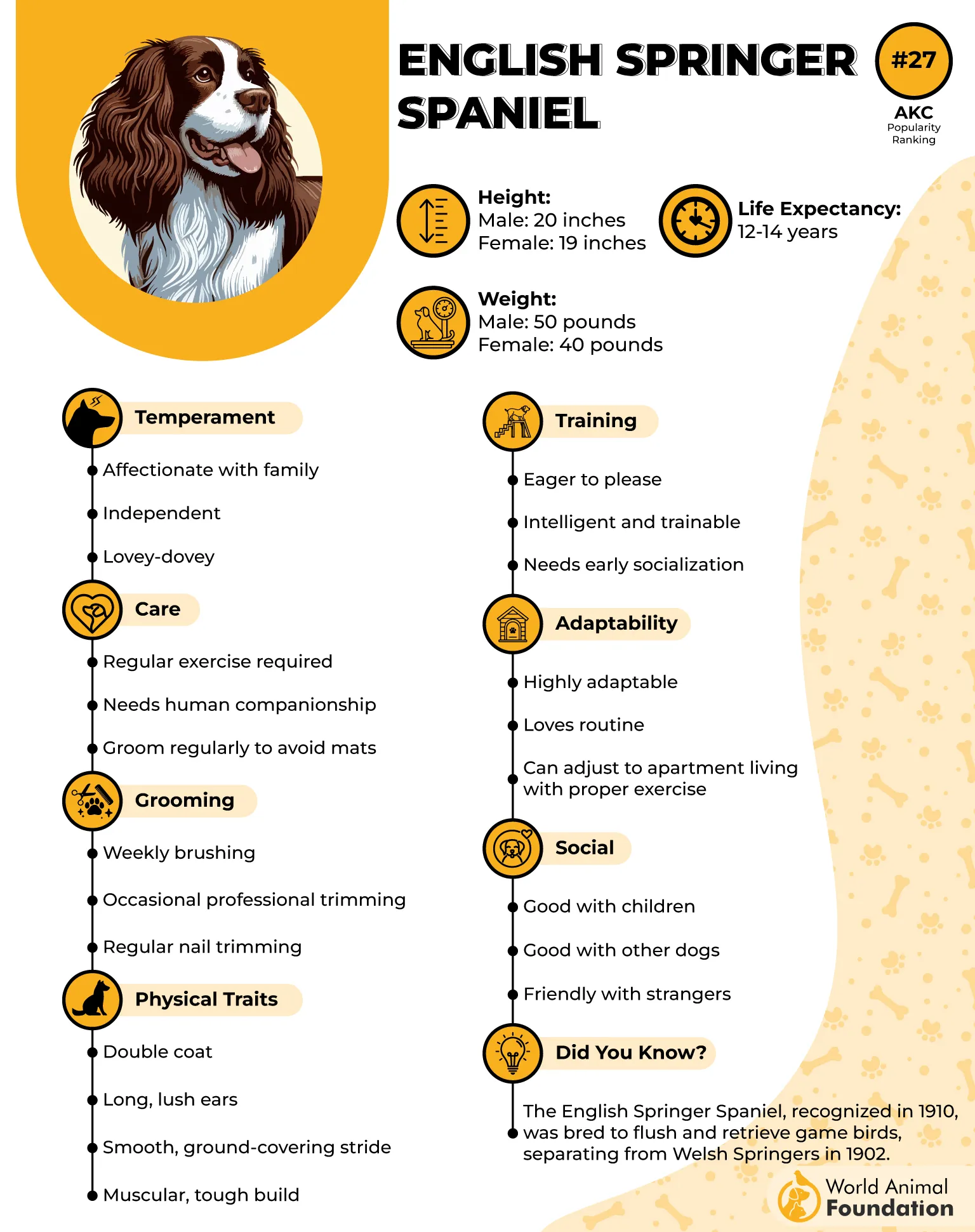
In addition to their reputation as skilled hunting dogs, Springer Spaniels are also celebrated in the show ring and cherished as affectionate family pets.
Springers are intelligent, obedient, and love working alongside their human. Give them a task and some praise, and they’ll be your loyal sidekick forever. They’re also total charmers—equal parts cuddle buddy and energetic adventurer.
Top Features
✔️ Super smart and easy to train
✔️ Exceptional flushing and retrieving instincts
✔️ Compact size, big energy—like a hunting rocket
✔️ Loving and loyal companions, both in the field and on the couch
Fun Fact: Springers are known for their “wigglebutt” greeting—they’re so happy to see you, their whole back end wags.
3. English Setter
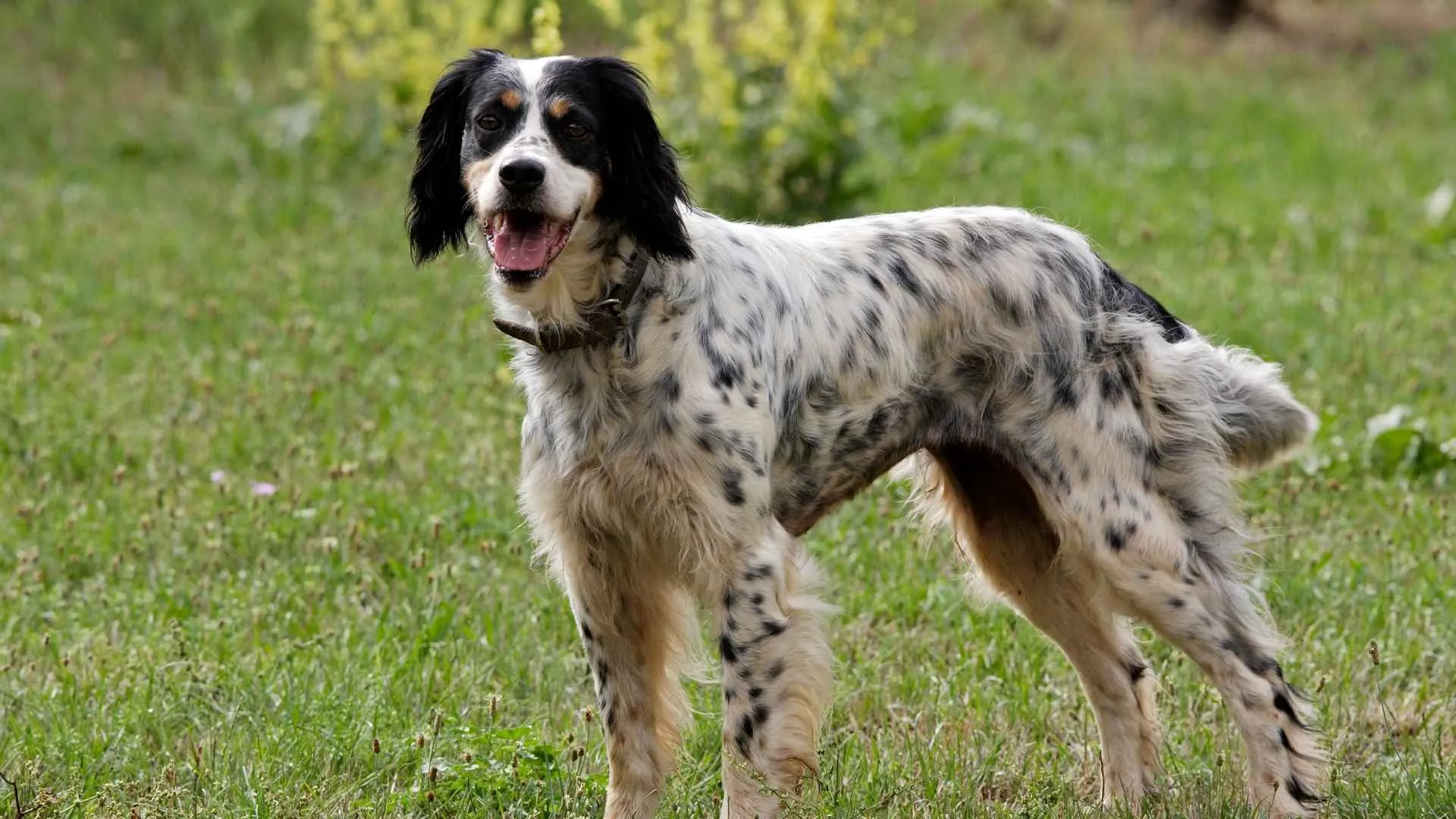
The English Setter is the James Bond of bird dogs—classy, poised, and sharp as a tack, with a touch of feathered fabulousness. Don’t let the elegant looks fool you—under that silky coat is a top-tier hunter that’s been pointing upland game birds with their exceptional hunting abilities since before your grandpa was born.
These dogs are known for their “setting” behavior—creeping low and freezing when they locate birds, allowing hunters to move in. English Setters are not only highly trainable and responsive, but they also make incredible family pets thanks to their sweet, gentle temperament.
The cheerful English Setter, often referred to as the “gentleman of the dog world,” is known for its polite demeanor—yet it’s spirited and playful when it comes to fun and games, according to the American Kennel Club (AKC).
Top Features
✔️ Natural pointers with a stylish stance (they look like they’re posing for dog magazines)
✔️ Easy to train, especially when using positive reinforcement
✔️ Silky feathered coat—looks fancy but built for the field
✔️ Affectionate and calm at home, but energized and focused in the field
English Setters have a gentle, playful temperament and a strong-willed yet eager nature. They thrive in family environments where they receive plenty of affection and attention. Social by nature, they get along well with both people and other dogs.
They shed moderately, so regular brushing is essential to manage loose hair and keep furniture clean. Their long, straight tails are heavily feathered and typically align with their back, adding to their elegant appearance.
Fun Fact: If English Setters could speak, they’d probably ask for a bird to flush and a hairbrush. That coat doesn’t groom itself, darling.
4. Irish Setter
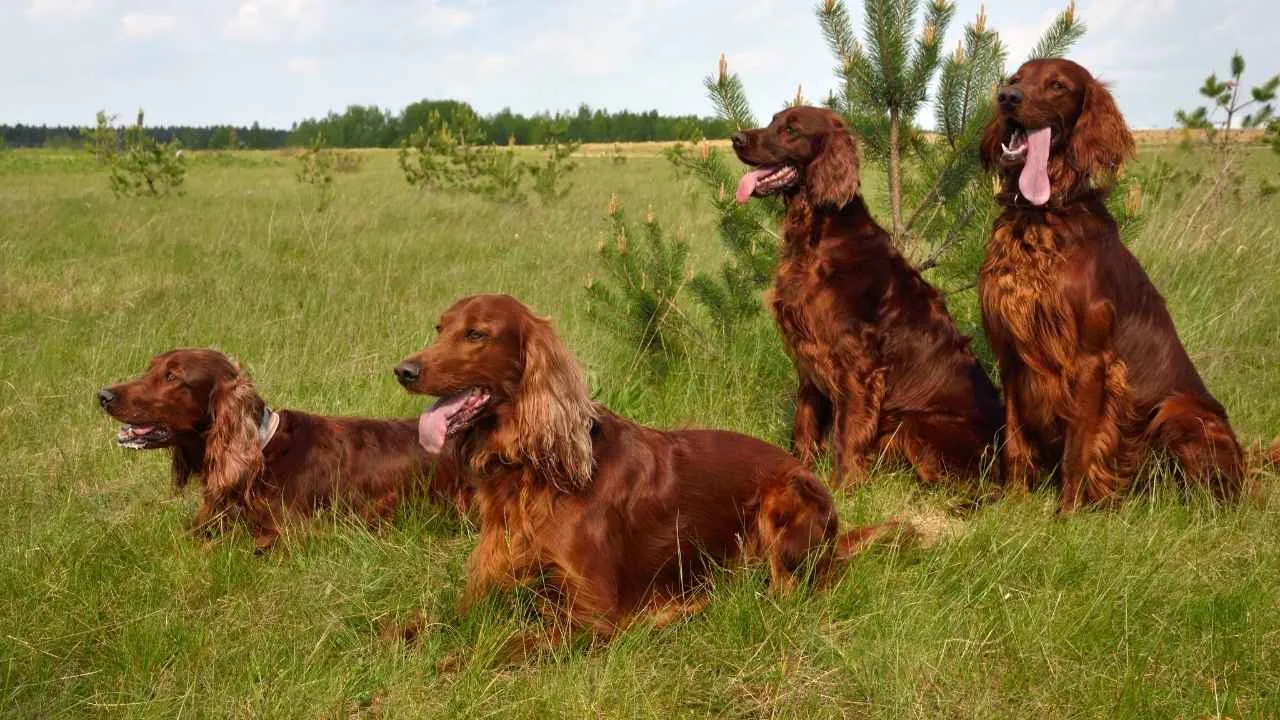
Red, radiant, and faster than your morning coffee kicks in, the Irish Setter is a showstopper in the field and the living room. With a fiery chestnut coat and a personality to match, Irish Setters are the extroverts of the hunting dog world—high energy, hilarious, and always up for an adventure.
While they may have a slightly longer learning curve than some other breeds (hello, selective hearing!), their trainability shines through with consistency and patience. These dogs love people, love to run, and love to work, especially when there’s praise and play involved.
Irish Setters are friendly and sociable, often getting along well with children, other dogs, and visitors. However, due to their hunting instincts, they may not be the best match for homes with small animals.
Top Features
✔️ Built for speed, stamina, and style
✔️ Great at flushing and retrieving birds
✔️ High-energy, fun-loving, and people-pleasing
✔️ Gorgeous, flowing coat that turns heads
They require plenty of daily exercise—ideally two or more hours of running and play—to stay healthy and prevent boredom-related behaviors.
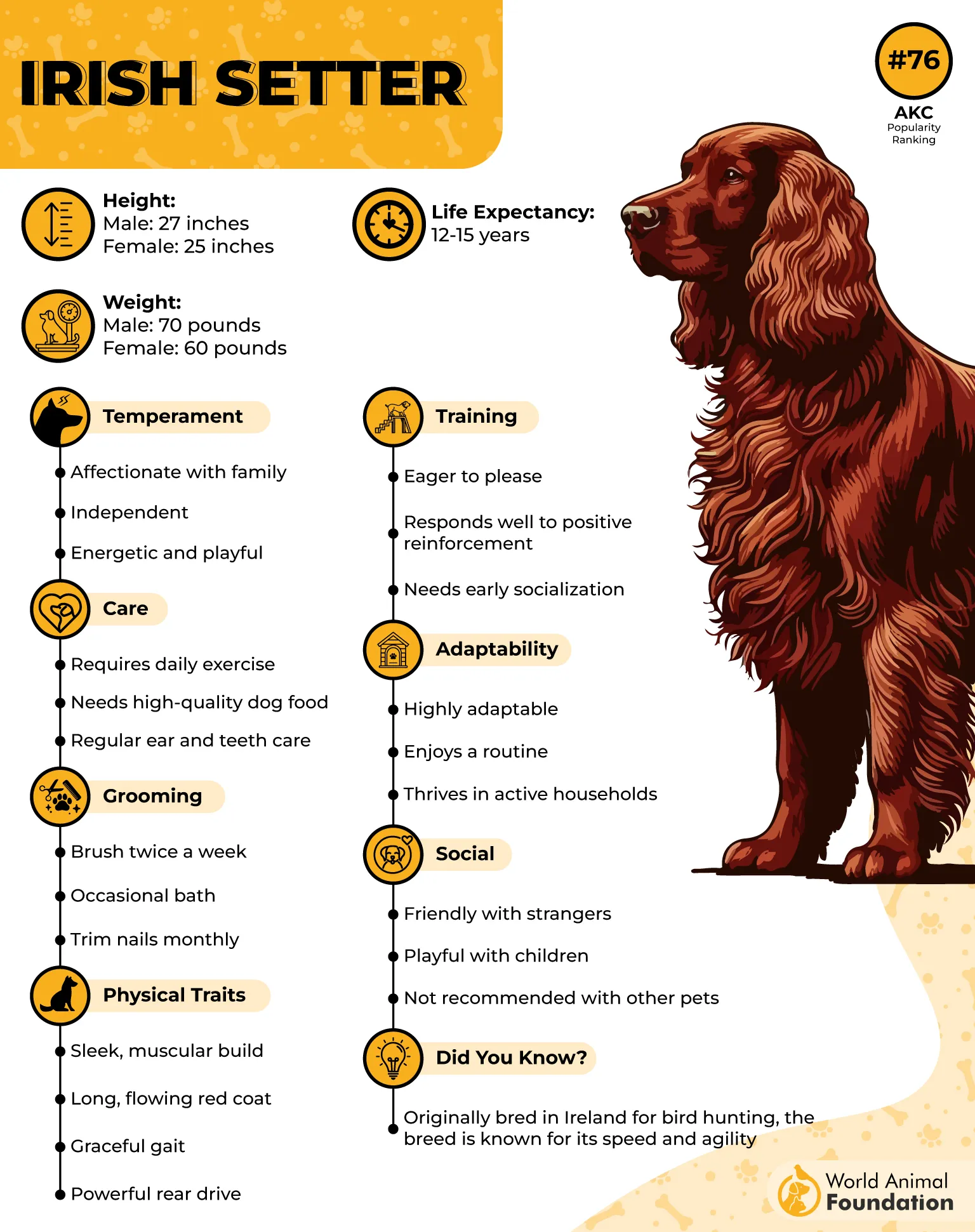
Irish Setters can be a bit stubborn and independent, often preferring to do things their own way. Their medium-length coat benefits from occasional baths using a gentle dog shampoo to maintain healthy skin and a clean, shiny coat.
Fun Fact: Irish Setters are like toddlers on espresso—super sweet, but you’ll need a yard and a sense of humor.
5. Cocker Spaniel
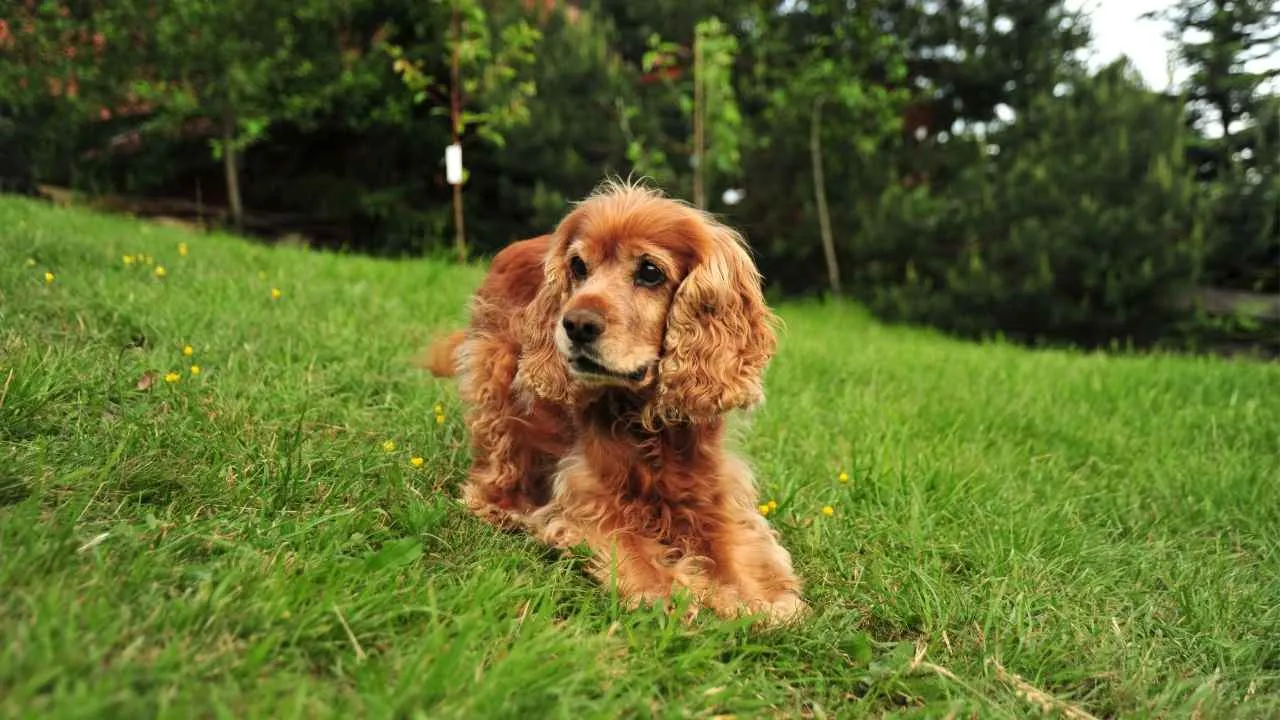
Don’t let those big, soulful eyes and floppy ears fool you—Cocker Spaniels are tiny titans when it comes to flushing game birds. Originally bred for hunting woodcock (hence the name), this breed is surprisingly powerful, energetic, and alert under all that cuteness.
Cocker Spaniels are great companions for first-time pet parents, as well as both adults and children. Their small size, gentle temperament, and moderate energy needs make Cocker Spaniels well-suited for apartment living.
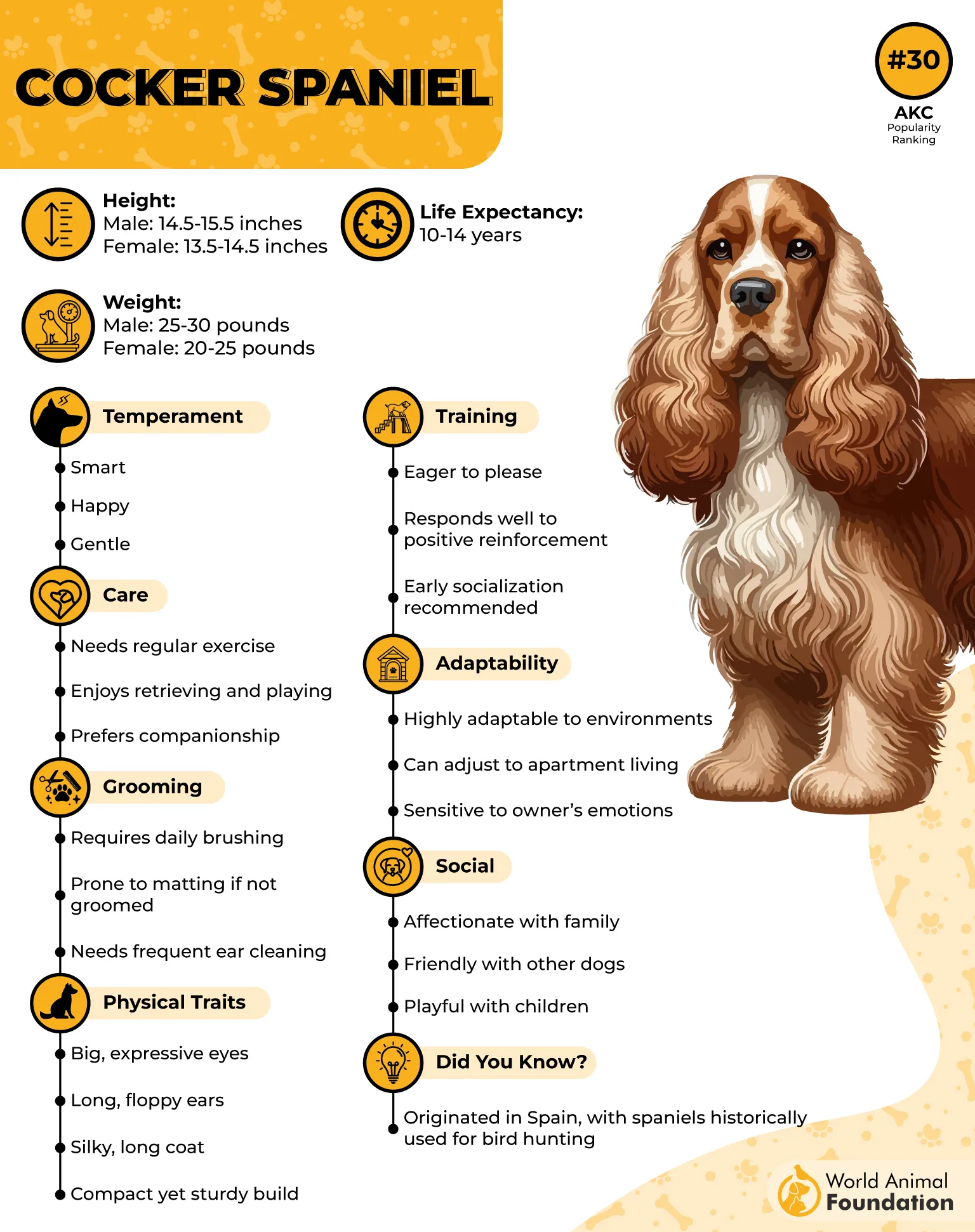
Cocker Spaniels are also super trainable, eager to please, and known for their tail-wagging work ethic. They’ll happily zip through underbrush, nose to the ground, and retrieve like little pros—all while looking adorable enough to be on a dog food commercial.
Top Features
✔️ Compact, athletic body that moves fast and gracefully
✔️ Excellent flushing and retrieving instincts
✔️ Intelligent and quick to learn new commands
✔️ Equally happy chasing birds or chilling on the couch
Cocker Spaniels need frequent, consistent brushing to manage their high-maintenance coats and prevent tangles or matting. With a typical lifespan of 10–14 years, they offer long-term companionship and affection.
Fun Fact: Training a Cocker Spaniel is a bit like coaching a Disney character—they’re sweet, dramatic, and very food motivated.
6. Bloodhound
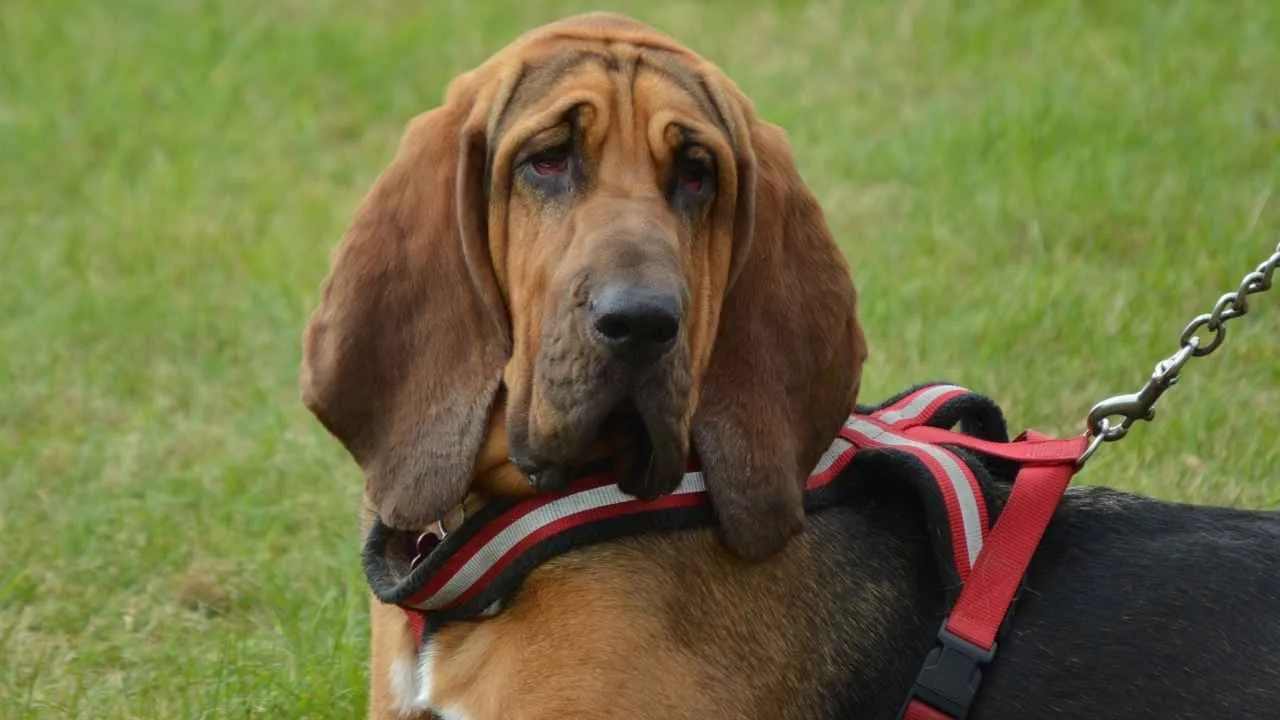
Bloodhounds are like the detectives of the dog world. While not your typical bird dog, they’re absolute legends when it comes to tracking and scent work. If Sherlock Holmes were a dog, he’d be a Bloodhound—with droopy ears, loose skin, and a nose that can track a scent trail over 130 miles.
Bloodhounds are social, pack-oriented dogs that thrive in the company of others, including children and other pets, especially when introduced early. With the right environment and family, they can make excellent family companions.
They’re incredibly trainable for tasks involving tracking and search-and-rescue, but… let’s just say recall isn’t their strong suit once their nose is in the zone. Still, with the right training, they’re unmatched when you need to find anything or anyone.
Top Features
✔️ Best scent-tracking abilities in the canine kingdom
✔️ Strong, independent, and loyal to the job
✔️ Loves to work, sniff, and follow a trail
✔️ Deep bark and soulful eyes that melt hearts
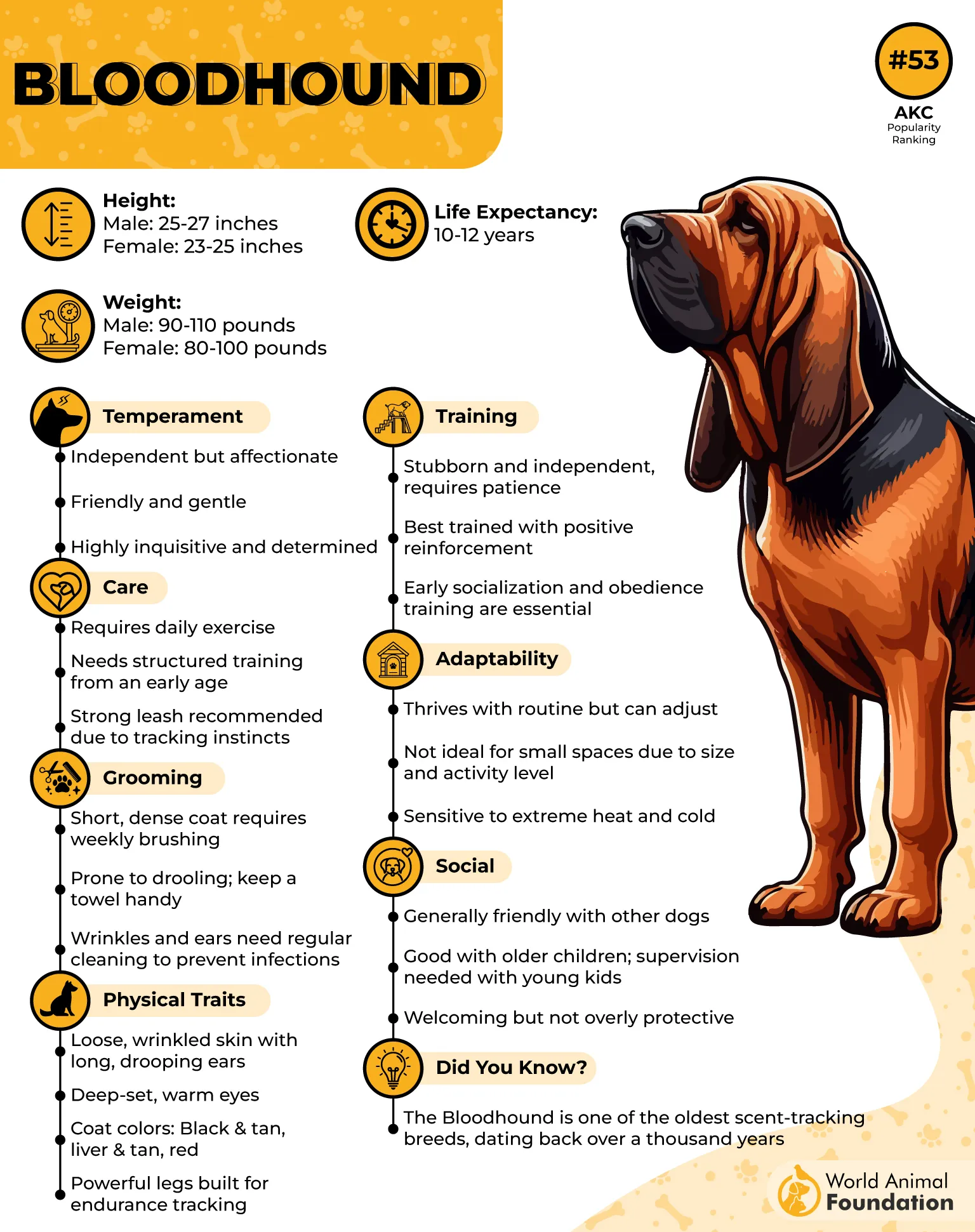
Bloodhounds can be quite stubborn and are known for being one of the most vocal breeds, often using their distinctive deep howl to communicate. Fortunately, their grooming needs are minimal, thanks to their short, moderately shedding coat, making them easier to care for in that regard.
Fun Fact: Once a Bloodhound starts tracking, not even a T-bone steak will distract them. They take their job very seriously.
7. Weimaraner
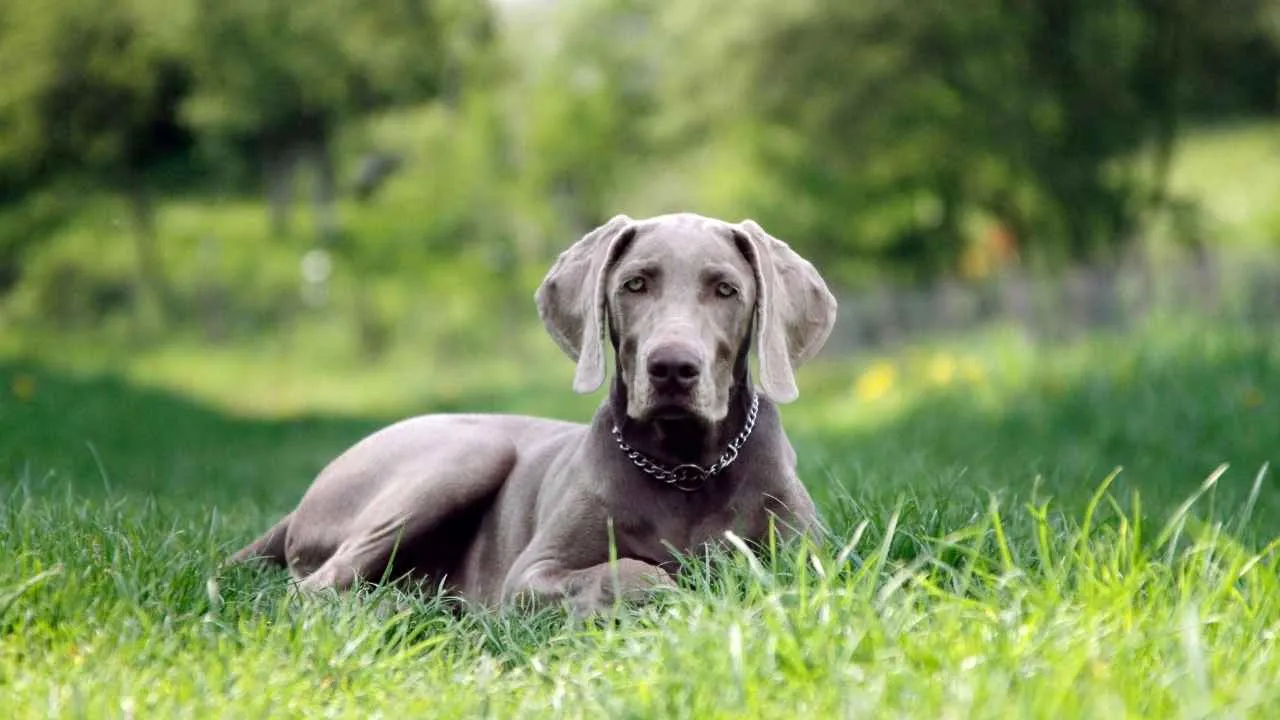
Ah, the Weimaraner—sleek, silver, and built like an athlete. The Weimaraner, introduced to the U.S. in the late 1920s, quickly became popular as both a hunting buddy and a family pet.
These dogs were bred in Germany to hunt big game (think deer and boar), but they quickly proved to be versatile enough for birds, too. They’re fast, intelligent, and fiercely loyal, making them a favorite for hunters who want a high-performance partner.
Training a Weimaraner is a bit like training a gifted toddler—they learn fast but demand your full attention (and maybe some bribes). With consistency and early socialization, though, they become outstanding companions and field dogs.
Top Features
✔️ All-around hunting champs—pointing, retrieving, tracking, you name it
✔️ Strong, agile, and built for endurance
✔️ Incredibly smart and eager to bond
✔️ That silver-gray coat? Just a bonus
This high-energy breed requires plenty of physical exercise and human interaction. Being highly intelligent, Weimaraners need mental stimulation to prevent unwanted behaviors like chewing or digging.
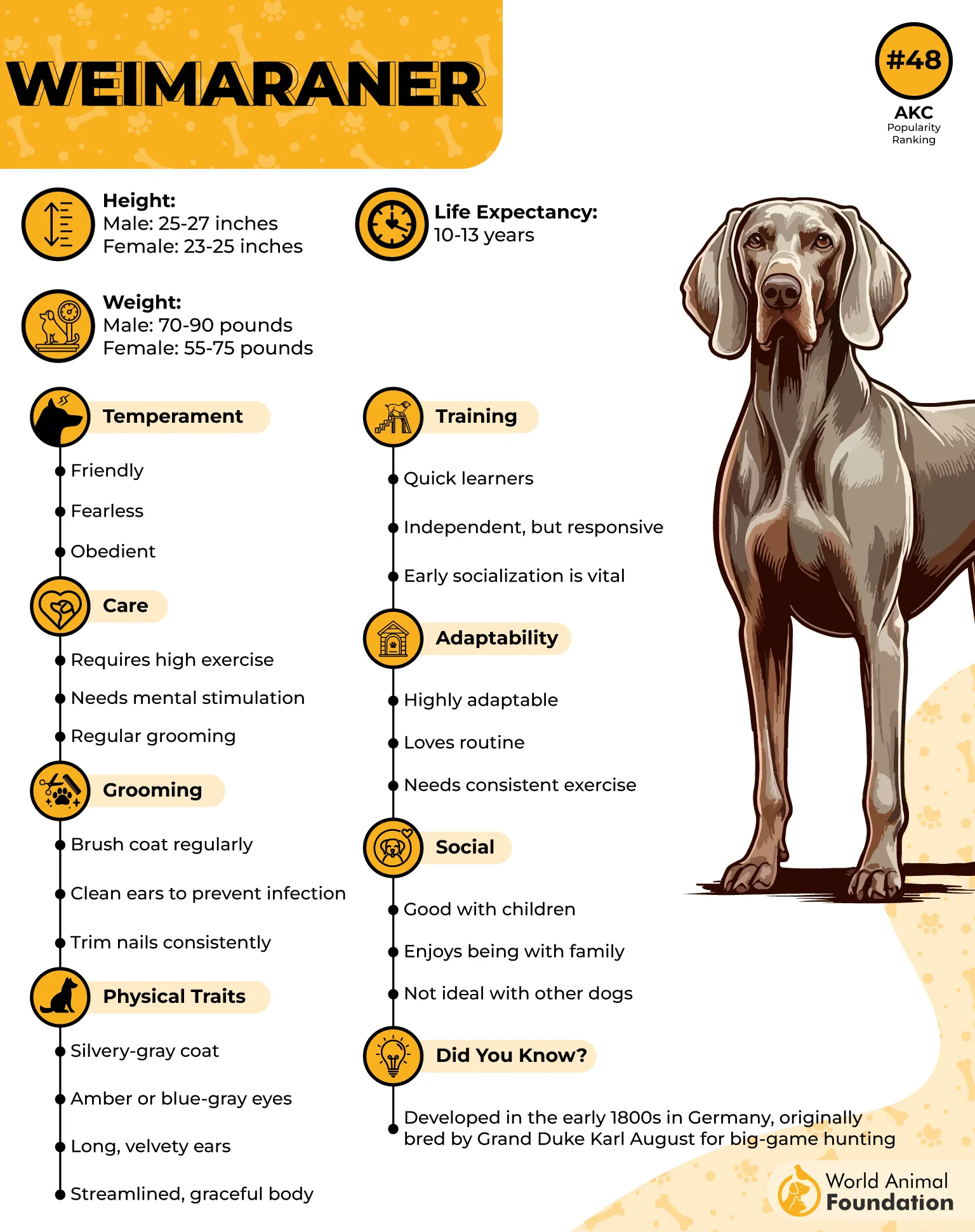
Though friendly, they can experience separation anxiety, and when bored or lonely, they may resort to excessive barking or even attempt to escape.
Fun Fact: Nicknamed the “Gray Ghost,” Weimaraners are known for silently shadowing their humans. Don’t be surprised if you turn around and they’re just standing there… watching… always watching.
8. Golden Retriever

Golden Retrievers are one of the most beloved dog breeds in the U.S. They aren’t just a family favorite—they’re also legit hunting legends.
Goldens were originally bred as hunting dogs, specifically for retrieving game during hunts. Their strong instinct to fetch, along with their keen sense of smell and excellent stamina, made them ideal as upland bird hunters and retrieving waterfowl.
They’re known for their intelligence, loyalty, and affectionate nature. Often referred to as “Goldens,” these dogs make fantastic family pets due to their friendly demeanor with both children and other animals, especially when properly socialized from an early age.
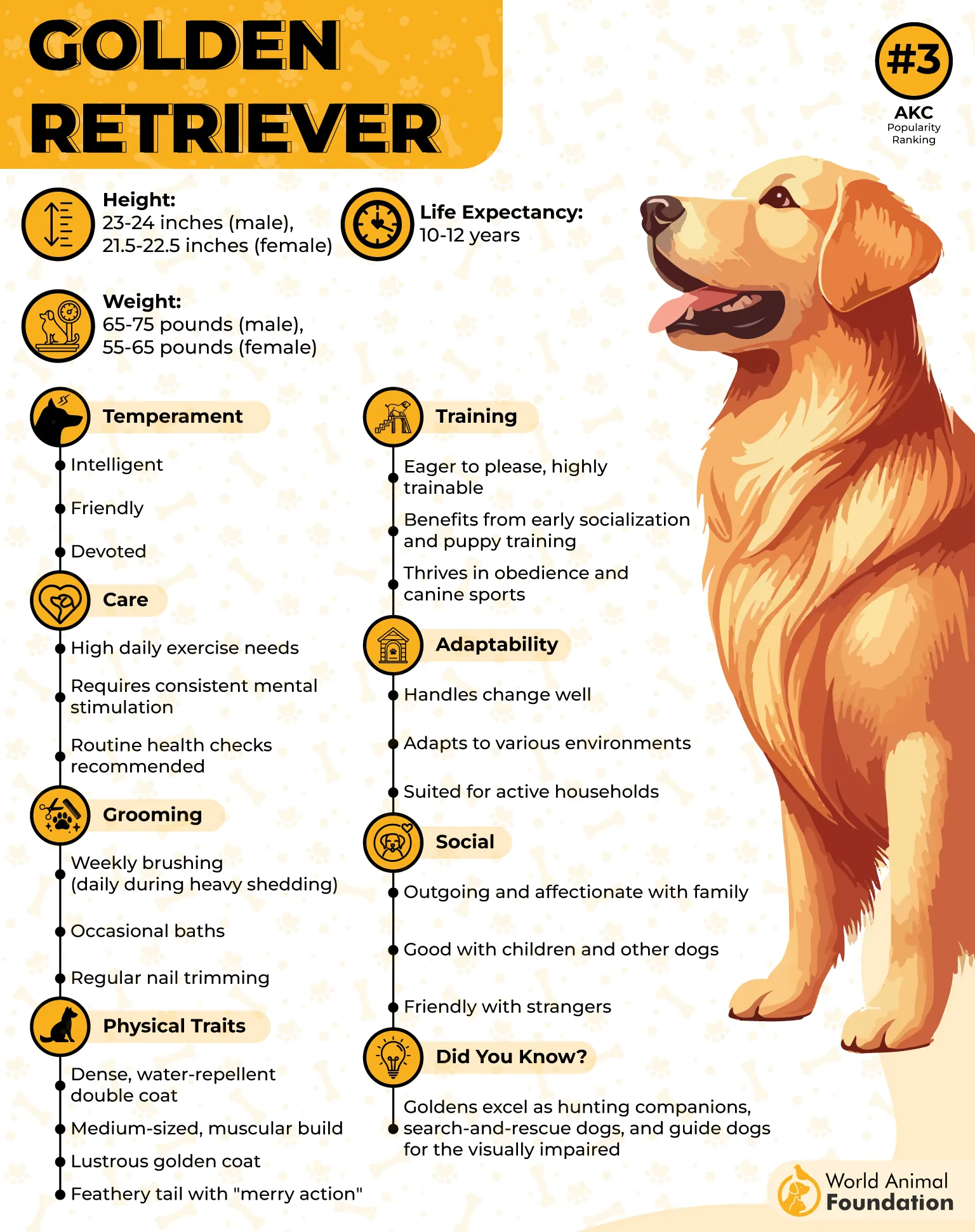
These dogs are incredibly smart, obedient, and eager to please, making them easy to train even for novice handlers. Whether in the field or playing fetch with your kids, a Golden gives 110%… and probably brings back a stick you didn’t throw.
They may pose some training challenges at first, as they can become easily distracted during early sessions. Without proper training, they may struggle to walk on a leash due to their strong desire to explore or engage in play.
Top Features
✔️ Extremely trainable and responsive to commands
✔️ Legendary retrieving skills, especially in water
✔️ Great with kids, strangers, cats—everyone
✔️ Fluffy, photogenic, and full of heart
Fun Fact: A Golden Retriever will bring you a duck… or a glove… or your neighbor’s sock. If it fits in their mouth, it’s coming to you.
9. Nova Scotia Duck Tolling Retriever
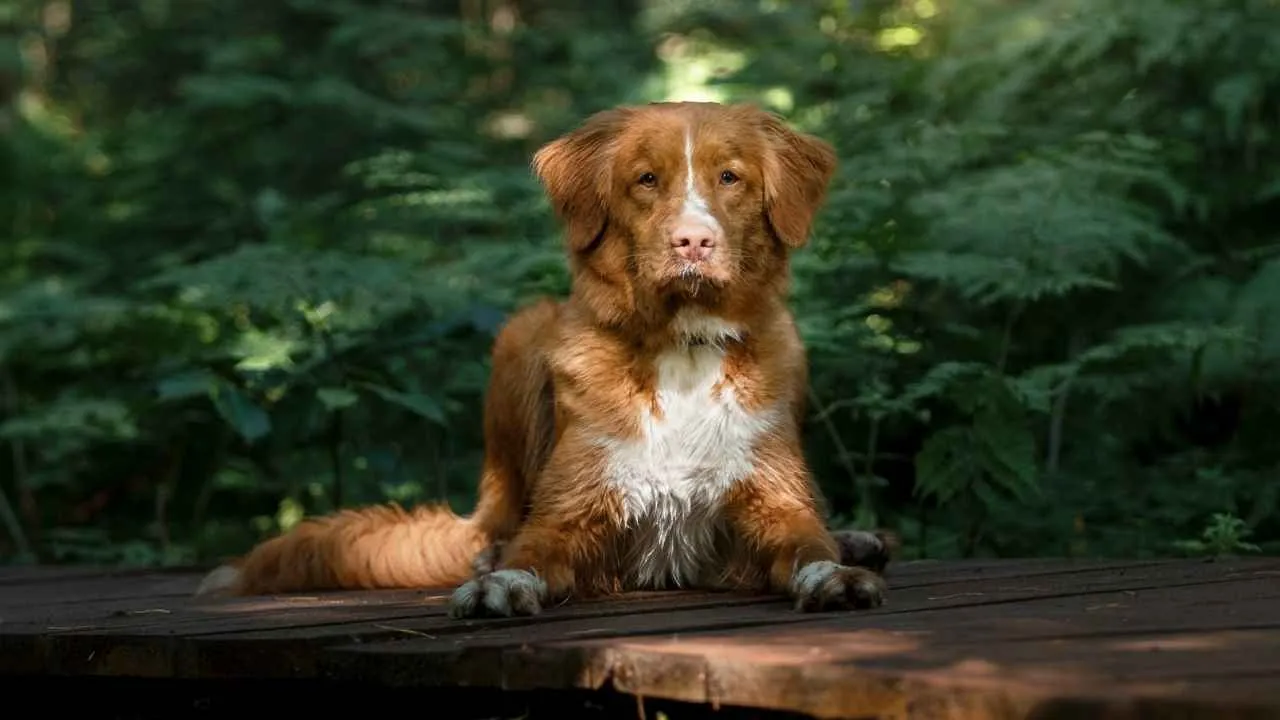
Don’t be fooled by the long name and fox-like looks—“Tollers” are as clever as they are cute. Bred in Nova Scotia (big surprise), these little dynamos are expert duck lurers and retrievers. Their secret weapon? Tolling—a playful act that mimics foxes to attract curious ducks closer to the hunter.
The Nova Scotia Duck Tolling Retriever is medium-sized, with males standing 18 to 21 inches at the shoulder and females 17 to 20 inches.
They’re wicked smart, full of energy, and highly trainable… but don’t expect them to be pushovers. Tollers have a mischievous streak and are known to outwit humans for fun (or snacks).
Top Features
✔️ Highly intelligent and loves mental challenges
✔️ Natural duck hunters with a unique luring style
✔️ Athletic, compact, and built for speed
✔️ Energetic companions who double as goofballs
They are known for their patience and friendliness with children and interactions with other dogs. While they may be initially wary of strangers and new situations, they typically warm up quickly once they feel secure.
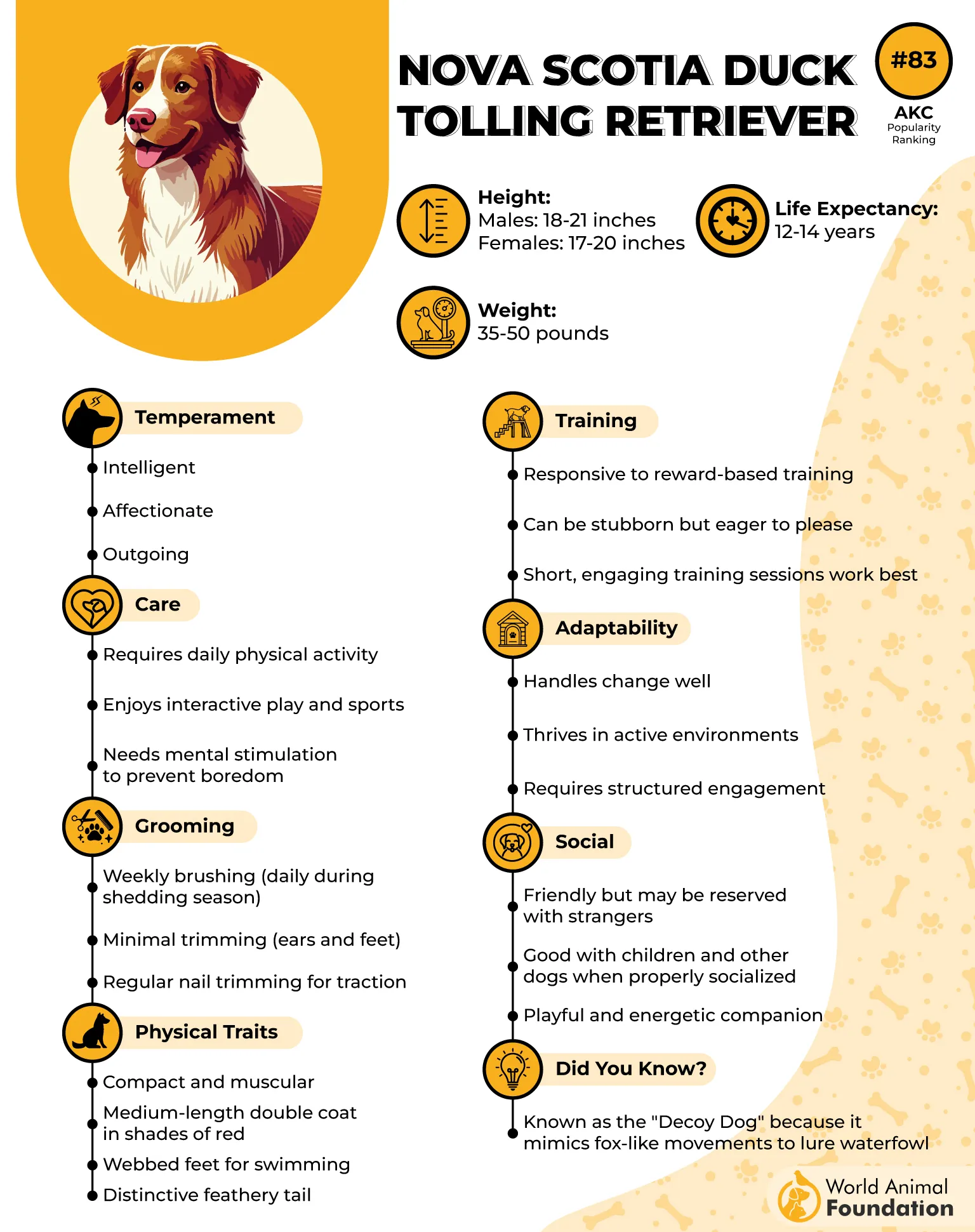
They don’t require much indoor space but need ample outdoor exercise. Known for their alert and determined temperament, they thrive with daily vigorous activities like a brisk walk or a long game of fetch. However, it’s important to avoid over-exercising them, as they can continue playing beyond healthy limits.
Fun Fact: Tollers don’t just retrieve—they perform. Think of them as the clever little redheads of the retriever family, starring in their own duck-hunting Broadway show.
10. Brittany Spaniel

Lightweight, high-speed, and bursting with enthusiasm, the Brittany Spaniel is a field dog that never clocks out. Originally from France, these dogs are versatile gun dogs—they point, flush, and retrieve like champs, all while looking like they just drank three espressos.
Brittany Spaniels are known for being one of the most versatile hunting breeds with strong hunting instincts. Their long legs, which are roughly the same length as their bodies, are a key distinguishing feature.
Originally bred for high energy and enthusiasm, Brittanys require plenty of exercise to stay happy and healthy. They are easy to train, laser-focused in the field, and affectionate at home. If you like a dog that’s equal parts athlete and cuddle monster, the Brittany might be your perfect match.
Top Features
✔️ All-in-one hunter—points, flushes, retrieves
✔️ Agile, energetic, and light on their feet
✔️ Friendly and easy to live with (as long as they’re exercised!)
✔️ Medium size with maximum drive
They make excellent family pets, especially for active, outdoorsy families. While they are generally good with small children and other dogs, they may take some time to warm up to strangers.
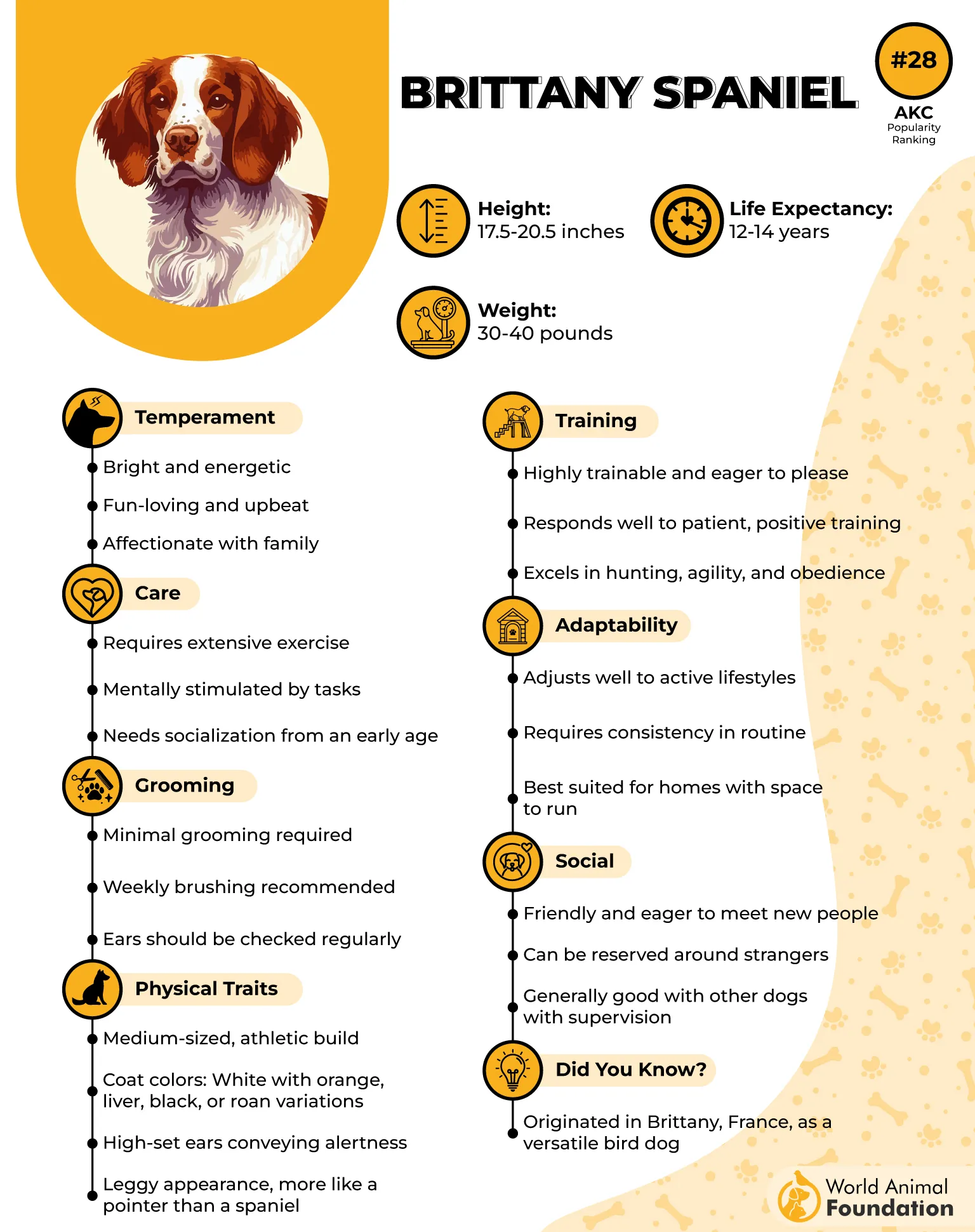
Purina says, Brittanys are not suited for families who cannot dedicate time to keeping them entertained, as boredom can lead to undesirable behavior.
Fun Fact: Brittanys don’t walk—they bounce. If your dog has cleared your couch in a single leap, congrats—you own a Brittany.
Conclusion
When it comes to hunting, certain dog breeds stand out for their exceptional abilities in various tasks, from retrieving to tracking games. These highly trainable hunting dog breeds excel in different aspects of hunting, including waterfowl hunting, upland bird hunting, and hunting small game. Their keen sense of smell and sharp instincts allow them to perform a wide range of hunting tasks efficiently.
Breeds such as the Chesapeake Bay Retriever, German Wirehaired Pointer, Boykin Spaniel, and German Shorthaired Pointer are often selected for versatile hunters due to their remarkable ability to retrieve prey, navigate rough terrain, and track wounded game.
While these breeds are not mentioned, their versatility and unique hunting styles make them invaluable companions for hunters seeking reliable and it is fun to train hunting dogs. Scent hounds, known for their keen nose, are essential for tracking both small and large game, with their ability to locate game and prey being second to none. Many hunting breeds are selectively bred to have an eager-to-please attitude, which makes them fantastic companions both in the field and at home.


